Get Crackin’
Cured!
It’s finally time to get crackin’. Literally. Black walnuts are ready for shelling.
This nutty story goes back to early this past autumn as black walnut trees were shedding their nuts. The nuts fall in their husks, the whole package looking like green tennis balls. Lots of people curse the trees for littering lawns, sidewalks, and driveways. We, on the other hand, praise and collect the nuts.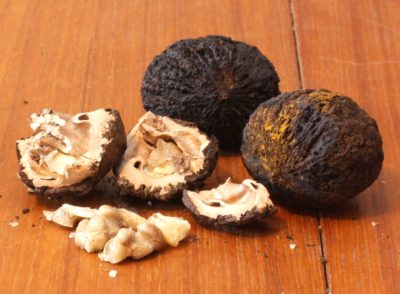
The first step to the present day crackin’ was husking the nuts. The soft, fleshy covering is easy to twist off the enclosed, hard-shelled nut. But we’ve also tried many methods to speed up the process, from spreading the dropped fruit in the driveway and driving over them to pounding them through a 1-1/2” hole in a thick piece of plywood to running them through a suitably modified old-fashioned corn-sheller.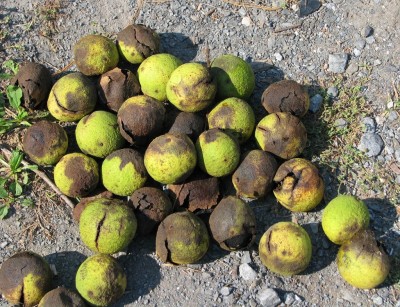
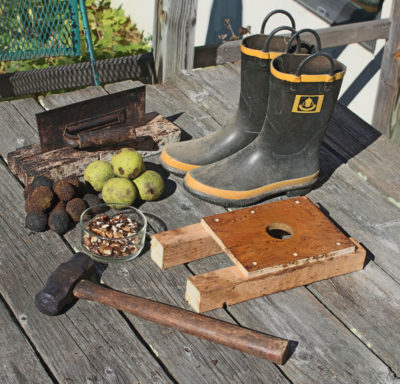
There’s no way around it: Husking black walnuts is a tedious job. And messy, because the soft flesh readily releases a juice which stains everything a deep brown color.
A friend recently told me of some novice black walnut enthusiasts that husked the walnuts bare handed, assuming the stain would wash off when they were finished. Not so. My wife Deb, who husks our black walnuts, chooses to sit herself down on a stool, don rubber gloves, and twist off the hulls, coaxing firm ones off with an initial tap with a light sledge hammer.
(The stain, which is colorfast and resistant to ultraviolet rays, is very easy to extract from the hulls for ink, for dyeing textiles, and staining wood. Just mix the hulls or unhulled nuts with water and boil for awhile or let sit a longer while. Strain and you’re good to go.)
In not too long, we had a number of 5 gallon bucketfuls of hulled nuts — a slimy, ugly mess from bits of hull still attached to the nuts and from the myriad white maggots crawling.
Now it was my turn — to clean up the nuts. I loaded all the nuts into shallow harvest boxes that had plenty of large holes for air or water and drove over to a nearby car wash. After suiting up in an old pair of rain pants, a rain jacket, rubber gloves, and a face shield, and spreading out the boxes on the ground in the car wash, I gave them a thorough, water-only cleaning.
I then spread the boxes out in the sun for a couple of days to dry out the surface of the nuts. Squirrels would be a serious threat but I spread the boxes on our south-facing deck where our two dogs also spend much of the day unknowingly guarding the nuts. Each night, or if any rain was predicted, I stacked and covered the boxes.
After the nuts were sufficiently dry, I stacked the trays in the barn where our cat is the squirrel deterrent.
Then the nuts needed to be cured, which involves nothing more than leaving them alone in a cool, dry, squirrel-fee area. And that brings us up to the present day.
A Tough Nut
Black walnut is a hard nut to crack. No run-of-the-mill nutcracker is up to the job. The usual tool, which is effective, is a hammer against the nut resting on an anvil or concrete. Used with care, a vise might do the job.
Two problems: With the hammer, hitting your finger occasionally as you hold the nut is inevitable. You could, I guess, hold the nut in a pliers. With either method, you have to use just the right amount of force to crack the shell sufficiently in order to extract the nutmeats in reasonable sized pieces without crushing everything too, too small.
The hands-down best job for cracking black walnuts is, in my opinion, the “Master Nut Cracker” (http://www.masternutcracker.com). It’s expensive but well worth the money for the speed with which the nuts can be cracked and the large nutmeats that result from efficient cracking. Besides which, it’s a very well-made tool with a very ingenious design.
Once nuts are cracked, nutmeats still occasionally need further coaxing to free them from the shell. A useful tool that I use that almost everyone has is a type of wire cutter sometimes called a diagonal cutting plier. The right squeeze in the right place, the result of observation and practice, yields large nutmeats that pop right out.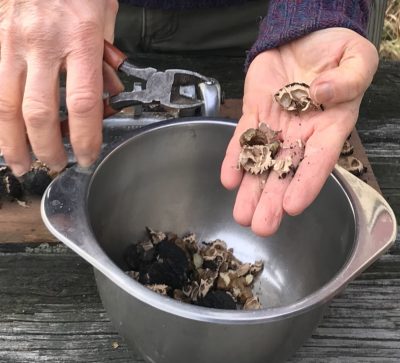
But Is It For You?
Black walnuts have a strong flavor that, like dark beer and okra, is loved by some but not enjoyed by everyone. But there’s no reason why everyone should like everything. Leave that goal to MacDonald’s. As L. H. Bailey, a doyen of horticulture, wrote back in 1922 (about apples), “Why do we need so many kinds of apples? Because there are so many kinds of folks. A person has a right to gratify his legitimate tastes.”
Black walnut is one of my favorite nuts. And, the trees and nuts abound around here, and elsewhere, free for the taking.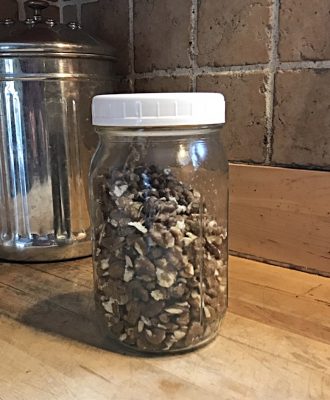

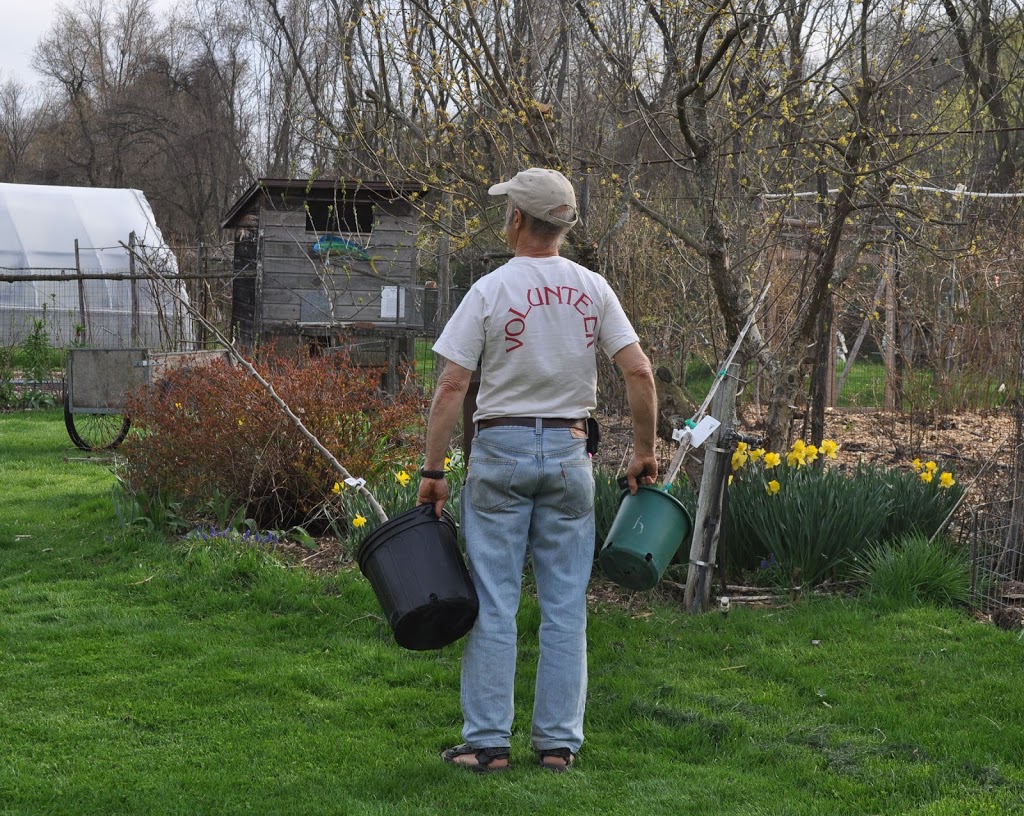
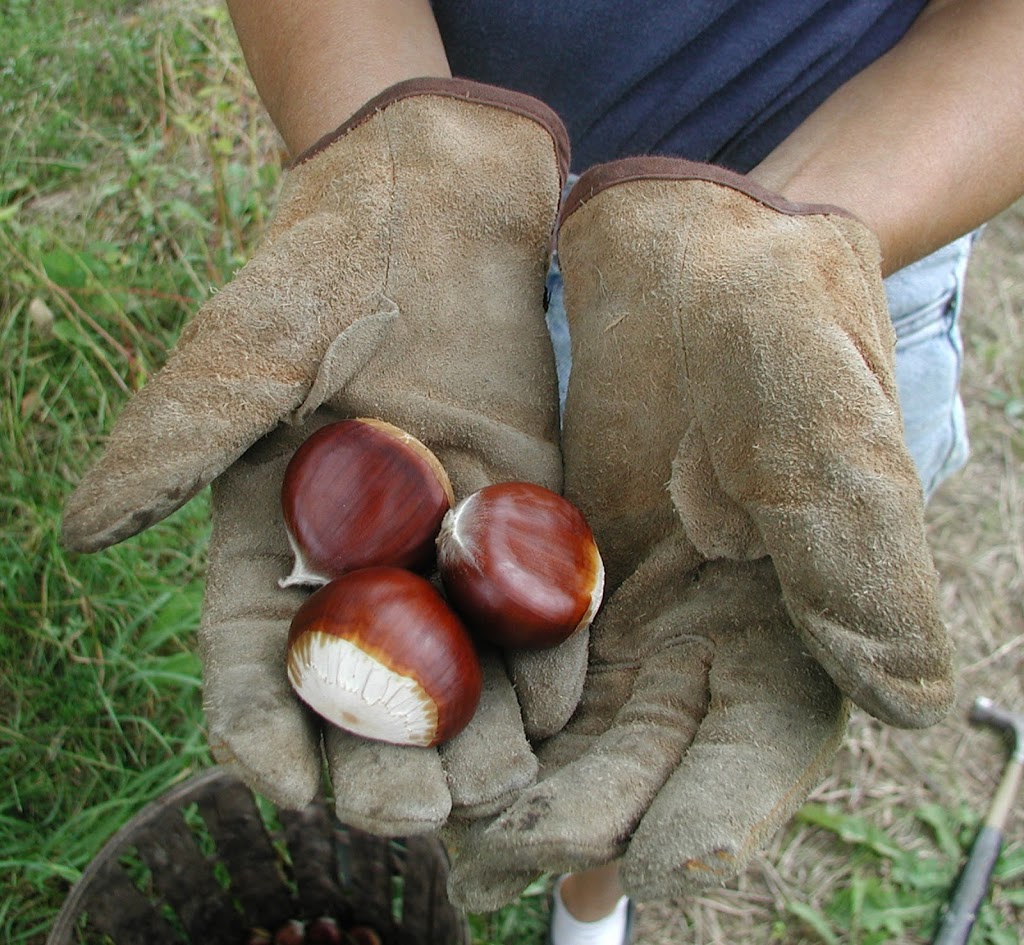
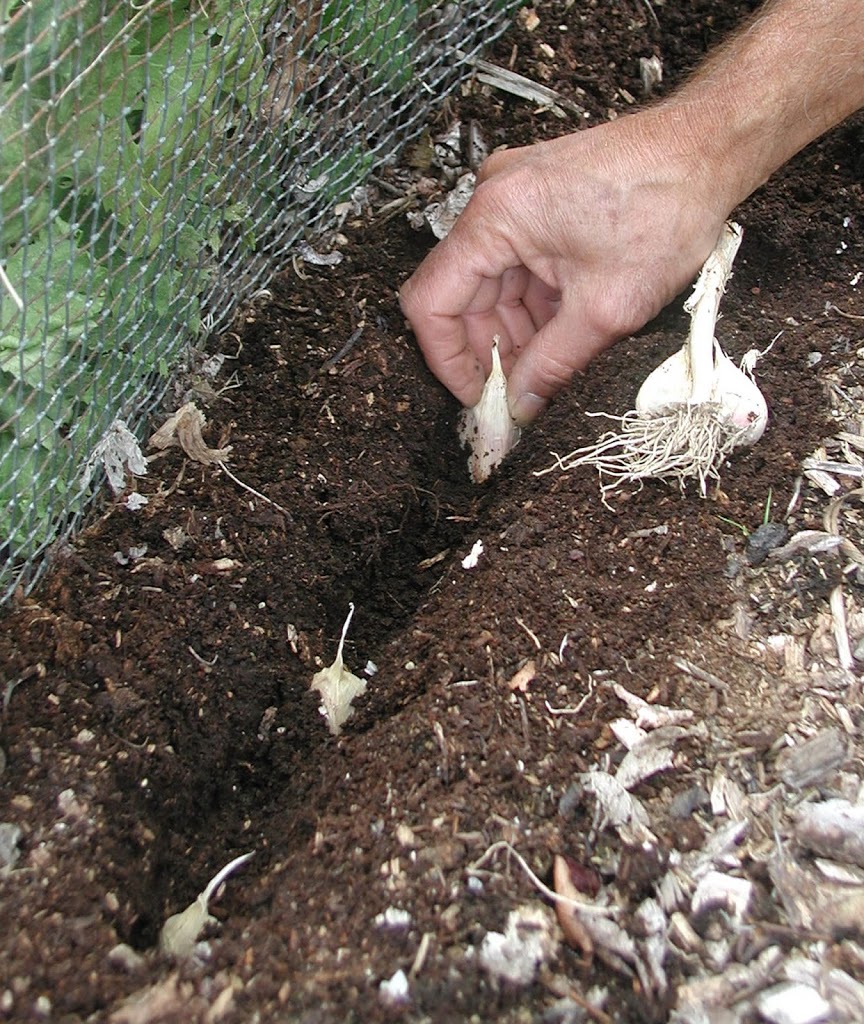

I can’t decide if you’re a hero or a nut job. Regardless, you’re going to live forever.
Can’t I be both?
I have LOTS of nut trees, Black Walnuts and Pig Hickory. Thanks for this explanation as I’ve never figured out hto get the meat out of the Black Walnuts. Will try with the Master cracker.
Drying the inner nut thoroughly is very important.
I haven’t seen their machine, but a place in Asheville Called Acornucopia use (invented?) a pair of heavy metal cones with rough surfaces.. One is inserted in the other, the lower one having several holes. The top one is rotated and pressedcdown with aone dort of screw mechanism and the nuts roll around and are broken, but not crushed, with everything falling into a bucket below. Then they manually separate the meat and use the shells for mulch on native edible plants that are part of a black walnut guild. I guess that’s raspberries, blackberries, persimmons and pawpaws.
I almost feel like going to Asheville just to see the machine. (I’m heading to Shelby, NC in about a month to give some talks.)
Bravo! I think our society has become too dependent on the easy things. Nice to see something not easy…
I love my black walnuts! I have pictures of my dad and I shelling walnuts when I was 4 years old. It’s a shame more people don’t know how good they are, especially for banana nut bread or persimmon nut bread. My favorite is pawpaw black walnut bread! After they’re shelled, I clean them with a drill and a (new) round toilet brush in the chuck. You have to fill a bucket halfway with water and nuts, then stick the brush in and spin away. It works pretty good, you just have to change the water several times. I’m going to try the car wash next year and see if that’s easier. I also use wire cutters like you do. I ground the edges down a little to make it easier to get close to the edges.
Good idea with the wire cutters. I have a few of them so I’ll grind some tips also.
Thanks for the article, Lee. I didn’t know anyone else liked black walnut as much as I do . They are very expensive at the market and I can’t find any free for the taking here in the Nashville area. When I was a child we had four trees in our yard and my brother and I would hull them. My Mom used to tell us our hands were not “fit” to go to Sunday School.
Around here, at least, lots of people don’t like them littering their yards so will actually bag them up for me to take away! There should be many black walnut trees in around Nashville.
Lee, I enjoy your blog posts and your books because I always learn something new about gardening from you. We have 24 acres behind our 1823 house, and all of the hedgerows have black walnut trees. We usually run over the walnuts with our car tires to husk them and try to crack the nuts with a hammer. We found that the squirrels would steal them, husked or not, overnight. We got a few last year, but the squirrels got a lot. We’ll try again this year. We live in upstate New York near Rochester. Thanks for your great blog.